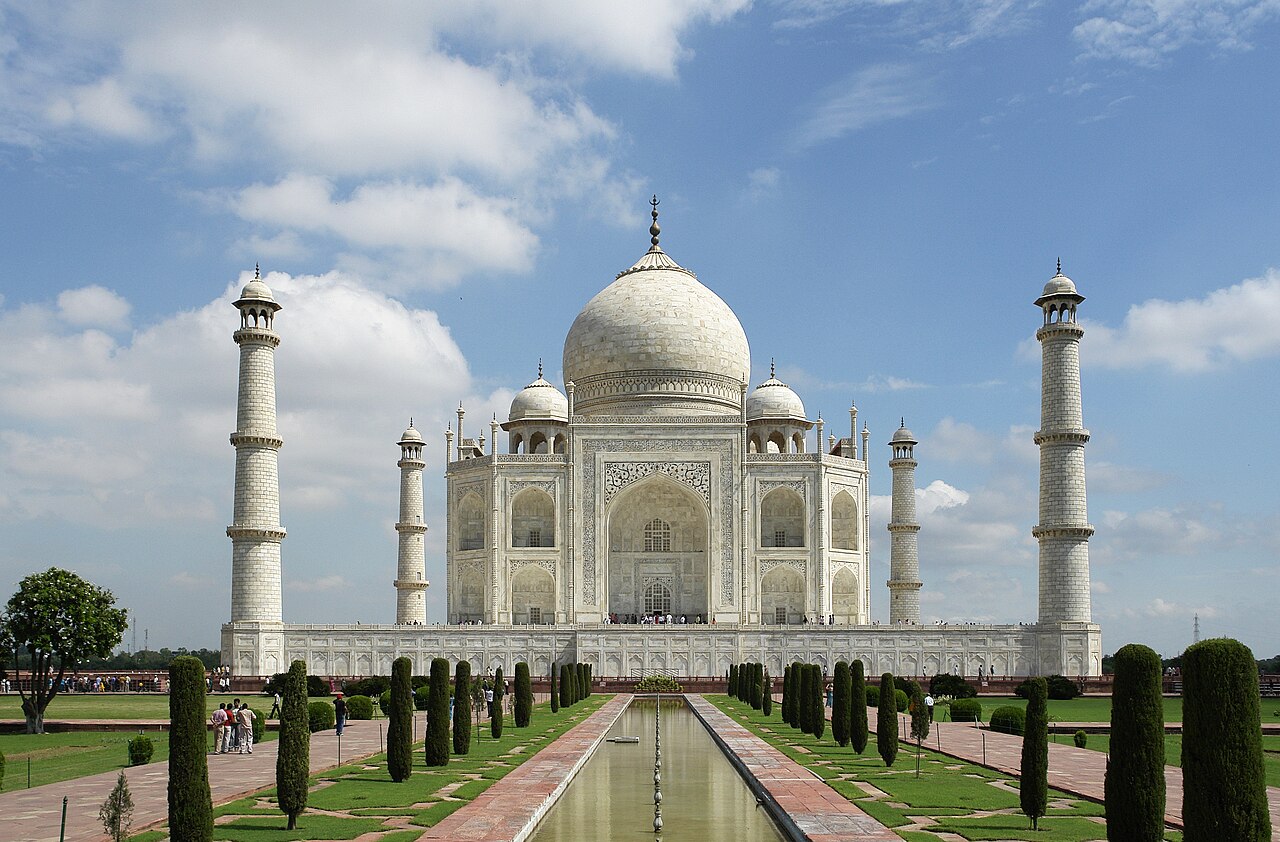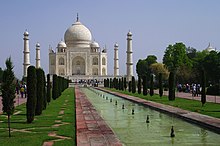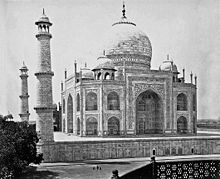TAJ MAHAL
The name “Taj Mahal” is of Urdu starting, and acknowledged to be gotten from Arabic and Persian, with the words tāj mahall connoting “crown” (tāj) “regal home” (mahall)Abdul Hamid Lahori, in his book from 1636 Padshahnama, suggests the Taj Mahal as rauza-I munawwara meaning the lit up or renowned tomb.[7] The name “Taj” might have been gotten from the pollution of the second syllable of “Mumtaz”

Inspiration
The Taj Mahal was authorized by Shah Jahan in 1631, to be underlying the memory of his significant other Mumtaz Mahal, who passed on 17 June that year while bringing forth their fourteenth kid, Gauhara Begum Development began in 1632, and the catacomb was finished in 1648, while the encompassing structures and nursery were done five years after the fact.
The Taj Mahal was approved by Shah Jahan in 1631, to be fundamental the memory of his life partner Mumtaz Mahal, who passed on 17 June that year while delivering their fourteenth youngster, Gauhara Begum. Advancement started in 1632, and the sepulcher was done in 1648, while the enveloping designs and nursery were completed five years sometime later.
Exterior
Four minarets flank the burial chamber building, one at each edge of the plinth confronting
the chamfered corners. The four minarets, which are every in excess of 40 meters (130 ft) tall
are evenly organized on the corners confronting the chamfered corners of the principal building.
Every minaret is made out of three practically equivalent parts with galleries at the convergence of the bits.
The pinnacles are likewise conquered by more modest chattris and integrate similar plan components
as the principal vault with a finial.[20] Steps lead to the highest point of the pinnacle with rectangular
openings underneath the vaults giving light and air on the top. The minarets were planned like customary
components of a mosque, which are utilized by the muezzin to call for supplication. The minarets were built marginally
arranged towards the beyond the plinth with the goal that in case of breakdown, the material from the pinnacles would
will generally fall away from the burial place.
Interior
 Four minarets flank the entombment chamber building, one at each edge of the plinth going up against
Four minarets flank the entombment chamber building, one at each edge of the plinth going up against
the chamfered corners. The four minarets, which are each more than 40 meters (130 ft) tall, are equally
coordinated on the corners going up against the chamfered corners of the chief structure. Each minaret is made
from three essentially identical parts with displays at the assembly of the pieces.
place of the apex with rectangular openings under the vaults giving light and air on the top.
The minarets were arranged like standard parts of a mosque, which are used by the muezzin to call for request.
The minarets were constructed barely organized towards the past the plinth with the objective that in the event of breakdown,
the material from the zeniths would will by and large fall away from the entombment place.
Situated within the screen in the upper main chamber are the likenesses of the tombs of Mumtaz Mahal and Shah Jahan with the actual burials done below in the lower tomb chamber. From the southern main entrance room, a stairway leads to the lower tomb chamber which is rectangular in shape with walls laid with marble and
an undecorated coved ceiling
Garden

Four minarets flank the internment chamber building, one at each edge of the plinth going toward the chamfered corners.
The four minarets, which are every in excess of 40 meters (130 ft) tall, are similarly planned on the corners going toward
the chamfered corners of the main design. Every minaret is produced using three basically indistinguishable parts with shows
at the get together of the pieces. The peaks are in this way vanquished by more honest chattris and coordinate similar game
plan parts as the main vault with a finial.[20] Steps lead to the most significant spot of the summit with rectangular openings unde
r the vaults giving light and air on the top. The minarets were organized like standard pieces of a mosque, which are utilized
by the muezzin to call for demand. The minarets were built scarcely coordinated towards the past the plinth with the objective
that in case of breakdown, the material from the apexes would will all around fall away from the burial place.
Later years
By the late 19th century, parts of the buildings had fallen into disrepair. At the end of the century,
British viceroy Lord Curzon ordered a restoration project, which was completed in 1908.He also commissioned
the large lamp in the interior chamber and replaced the gardens with European-style lawns that are still in place today
Four minarets flank the internment chamber building, one at each edge of the plinth going toward the chamfered corners.
The four minarets, which are each more than 40 meters (130 ft) tall, are likewise moved toward the corners going toward
the chamfered corners of the primary plan. Each minaret is delivered utilizing three essentially vague parts with shows at
the social gathering of the pieces. The pinnacles are in this manner vanquished by more genuine chattris and coordinate comparative strategy parts
as the principal vault with a finial.[20] Steps lead to the main spot of the culmination with rectangular openings under
the vaults giving light and air on the top. The minarets were coordinated like standard bits of a mosque,
which are used by the muezzin to call for request. The minarets were constructed barely organized towards
the past the plinth with the objective that in the event of breakdown, the material from
the zeniths would will all over fall away from the entombment place.
Myths
A few fantasies, none of which are upheld by the archeological record, have seemed stating that individuals other
than Shah Jahan and the first planners were liable for the development of the Taj Mahal. For example, in 2000, India’s
High Court excused P. N. Oak’s request to proclaim that a Hindu ruler constructed the Taj Mahal.[93][96] In 2005
, a comparative appeal brought by Amar Nath Mishra, a social specialist and minister guaranteeing that
the Taj Mahal was worked by the Hindu lord Paramardi in 1196, was excused by the Allahabad High Court.[97]
A few legal disputes and explanations by conservative legislators about Taj Mahal being a Hindu sanctuary have
been motivated by P. N. Oak’s 1989 book Taj Mahal: The Genuine Story, where he guaranteed it was implicit 1155 Promotion and
not in the seventeenth century.[98][99] In November 2015, the Association Pastor of Culture expressed in the Indian Parliament
that there was no proof that it was ever a temple.[100] In August 2017, the Archeological Study of India pronounced
hat there was no proof to propose the landmark at any point housed a sanctuary